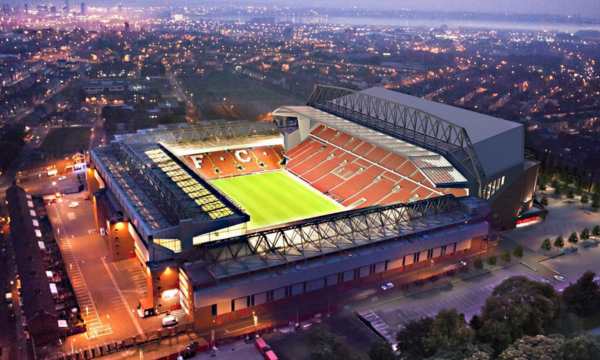Meet the Most Impressive Football Stadiums in the World
There’s something surreal about football stadiums where passion for the sport meets magnificent architecture.
Anúncios
These historic arenas are more than just game venues; they’re silent witnesses to unforgettable moments for both players and fans.
In today’s article, we’ll explore the world’s most impressive football stadiums, uncovering their stories, fun facts, and what makes them so special to sports enthusiasts.
Maracanã (Rio de Janeiro, Brazil)
Maracanã, opened in 1950, is an icon of world football and the essence of Brazilian passion for the sport.
It was once the world’s largest football stadium, hosting nearly 200,000 spectators in a single match, a record still unbeaten. It’s a place where the joy of football is palpable, a rare feeling found only in Brazil.
Its grandeur goes beyond the pitch, marking its presence in events like the 2016 Olympics opening ceremony.
Even after numerous renovations, the stadium has maintained its historical synthesis while embracing modernity, currently serving as home to Flamengo and Fluminense, two giants of Brazilian football.
Experiencing a game at Maracanã is like reliving historical moments and feeling the vibrant energy of Brazilian culture.

Maracana-Stadium-(Source-Google)
Wembley Stadium (London, England)
Wembley Stadium isn’t just a stadium; it’s an institution. With its reconstruction completed in 2007, it preserves the history and tradition of English football.
Symbolized by its 133-meter-high arch, it can be seen from many points in London, standing out as an architectural landmark.
Able to accommodate up to 90,000 people, this magnificent stadium is an ode to classic and modern events, hosting Champions League and Euro Cup finals.
Wembley is where British sports culture comes to life, amplified by passionate fan chants and the contagious energy of the crowd.
The stadium is a true journey through history, a place where visitors immerse themselves in the UK’s sporting heritage.
Camp Nou (Barcelona, Spain)
Camp Nou, home to the legendary FC Barcelona, shines as Europe’s largest football stadiums, housing nearly 100,000 fans.
This colossus has been the stage for grand events, such as Champions League finals and memorable matches from the 1982 World Cup. The atmosphere at Camp Nou is a melting pot of passion and Catalan tradition.
You can feel the fans’ fervor echoing through the stands while the brilliance of Catalan football illuminates the field.
Currently, the stadium is undergoing renovations to improve its facilities, keeping its rich history and unchanging identity.
For any football fan, a visit to Camp Nou is more than a tour; it’s a pilgrimage to the sacred land of football.
Old Trafford (Manchester, England)
Known as the “Theatre of Dreams”, Old Trafford is where Manchester United’s glory comes to life.
With over 74,000 seats, this venue is a living chronicle of English football history, immortalized by legends like Bobby Charlton and George Best.
The electrifying atmosphere of Old Trafford is unique, with passionate fan chants reverberating through the stands.
This football coliseum has undergone several renovations to update its facilities without ever losing its historical charm.
Besides watching a game, fans can explore the club museum, discover behind-the-scenes secrets, and dive into the rich history of this legendary stadium.

Old-Trafford-Stadium-(Source-Google)
Allianz Arena (Munich, Germany)
Allianz Arena, home to the mighty Bayern Munich, is one of the world’s most innovative football stadiums.
Its futuristic design, with a facade that changes color depending on the team playing, provides an impressive visual spectacle.
The atmosphere is vibrant and immersive, with 75,000 seats ensuring that each game is a celebration.
From hosting 2006 World Cup games to epic Champions League finals, Allianz Arena is synonymous with sporting excellence.
The stadium not only represents the pinnacle of technology and design but also captures the essence of passion for German football.
For visitors, it’s a complete immersion in a unique experience, where comfort and innovation meet amidst fervent devotion to the sport.
San Siro (Milan, Italy)
San Siro, officially known as Stadio Giuseppe Meazza, is one of the world’s most iconic football stadiums, located in the vibrant city of Milan.
Over time, it became home to two of Italy’s biggest clubs, AC Milan and Internazionale (Inter Milan), establishing itself as a stage for historic rivalries.
This stadium, with a capacity for over 80,000 spectators, has been the scene of memorable events, including games from two World Cups (1934 and 1990) and epic Champions League finals.
Interestingly, it was initially intended exclusively for AC Milan, with Inter Milan only starting to use it in the 1940s.
The atmosphere inside San Siro is especially legendary, where Milan and Inter fans create a unique spectacle at every match.
Anfield (Liverpool, England)
Since its inauguration in 1884, Anfield has carried a rich history, initially housing Everton before becoming Liverpool FC’s fortress in 1892.
This stadium, with a capacity for over 60,000 fans, is famous for its electrifying atmosphere, driven by the iconic “You’ll Never Walk Alone” chant that reverberates in the stands as a symbol of loyalty.
One of Anfield’s notable aspects is the tribute to two of Liverpool’s most legendary managers: Bill Shankly and Bob Paisley, each with a statue celebrating their eternal legacy.
This stadium has undergone several expansions to modernize its facilities, always staying true to its historical charm.
On match days, Anfield transforms, its gates echoing the vibrant energy of passionate fans, creating a true cauldron of emotions.

Anfield-Stadium-(Source-Google)
Estadio Azteca (Mexico City, Mexico)
Estadio Azteca was inaugurated in 1966 and has served not only as a renowned football stadium but also as a stage for historic moments, such as the 1970 and 1986 World Cup finals.
Known as the home of Maradona’s famous “Hand of God” play, this stadium has witnessed some of football’s greatest feats.
With a capacity for over 87,000 spectators, Estadio Azteca is the largest not only in Mexico but also one of the largest in the world.
Continuous renovations have modernized its facilities while preserving the historical legacy that Estadio Azteca boasts.
Its atmosphere is celebrated for being imbued with a vibrant passion, a unique characteristic of Mexican fans.
Conclusion
From the majestic Maracanã to the imposing Wembley, from the historic San Siro to the futuristic Allianz Arena, each stadium has its own personality, its own story to tell.
They are the stages where our heroes perform extraordinary feats, where intense matches unfold, and where passion for football reaches its peak.
And if you have the chance to visit any of these legendary football stadiums, don’t hesitate. Go, breathe the air, feel the atmosphere, touch the pitch if you can.
Football stadiums are more than concrete and steel; they are living monuments to the beautiful game, where history breathes with every match.
Because in the end, it’s these experiences that make us true football fans.
FAQ
Why is San Siro known as “La Scala del Calcio”?
What non-football events has Estadio Azteca hosted?
Has Anfield ever been home to another club besides Liverpool?
What was the most recent high-profile event at Wembley?
 Top 3 Apps to Watch CHAN 2025 Live Wherever You Are
Top 3 Apps to Watch CHAN 2025 Live Wherever You Are
The time has come to discover the essential apps to watch CHAN 2025 live! Anúncios CHAN 2025 will be held in three East African countries and […]
Keep reading DAZN: The App That Brings Football to You
DAZN: The App That Brings Football to You
If you’re a football big fan, DAZN is the app ideal that transforms how you follow your games. Anúncios This platform offers a unique and accessible […]
Keep reading Best Apps to Watch the Africa Cup of Nations Live
Best Apps to Watch the Africa Cup of Nations Live
Check out the apps that will broadcast the Africa Cup of Nations 2025 wherever you are! Anúncios The biggest African continental competition is about to kick […]
Keep reading